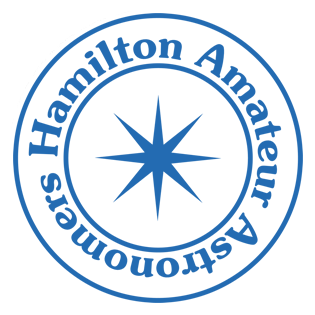After a very pleasant afternoon BBQ, it appeared that a couple of people were interested in heading out to Binbrook to look for a few more meteors and do some general observing. So with that in mind, I trotted on up to the main gate at about 9pm. While I was confirming the main gate was still locked, a young couple in from Toronto arrived who had checked out the club website and thought the park was always open for observing. After diplomatically correcting their misconceptions, I offered to escort them over to the alternate site on Tyneside in hope of finding some of the other club members.
I ran into another couple who were already set up and apparently were long time observers at this location. Brett and Cheryl were very enjoyable to talk to and were very open about sharing their giant binos and 100mm refractor. The young couple and I were able to observe a few clusters while explaining a little more about astronomy and the club.
Shortly aferwards, Jackie showed up and we had an official get together of the “rogues”. Not being one to pass up an opportunity to share in some comraderie and recognizing the moon wouldn’t be up for about 2 more hours, I set up my binos and 6″ reflector. Scorpius was just setting and I hoped to catch the Jewel Box before it dropped below the trees. Still being too slow with set up, I missed that object (again) but did manage to view M80. Before leaving the southern skies for the night, I also observed globular cluster M9 for the first time.
Fortunately Jackie brought lots of batteries with her so once she was properly aligned (based in part on my inaccurate watch), she was good to go.
Amongst our observing and socializing, more general public joined us and some came over to look through the scopes & binos, ask some good questions about astronomy and gasp in amazement at some of the bright meteors (it was better than Friday night). It was like another public night with nearly a dozen people showing up. We were able to show them a number of globular and open clusters, and a few nebulaes. Of course I had my green laser going to help show off the sky better. (Sure wish I had that narrow band filter for the nebulaes)
During this time we tried again for comet 177P, but after a false identification, we convinced ourselves we only saw M92. (Too bad on the comet, but another Messier for me.)
Later I swung the scope towards the north east and started after a few Messiers around Cassiopeia. We found the double cluster pretty easily. Jackie mentioned Kemble’s Cascade so I gave it a try and found a very neat string of stars leading to a small open cluster. After a false identification of M103, which turned out to be NGC457, I did eventually locate M103 and then followed shortly afterwards by NGC663 – all very nice little open clusters.
Regrettably the waning moon was now getting high enough to be a nuisance for observing. I decided to look at M31 anyways, but as expected it was washed out by the moon glow. Having given up on other objects, Jackie conceded defeat and swung her scope over to the moon with a filter. Impressed (and I guess also admittng defeat), I decided to do the same. Way too bright in the scope initially – even with the moon filter. Brett suggested a red filter which made it look like Mars, but it did help bring out some new details. Inspired I tried several filters including the yellow. Remembering reading something about stacking, I stacked the yellow and moon filters and it made observing quite pleasant. When Jackie started trying to identify regions on the moon, I flipped NightWatch over to the moon chapter and we picked up quite a few of the larger features including the Tycho and Copernicus craters, and the Apennine mountain range. The rays emanating from Tycho were amazing.
Thus ended another fun night of observing with good company and good skies.
